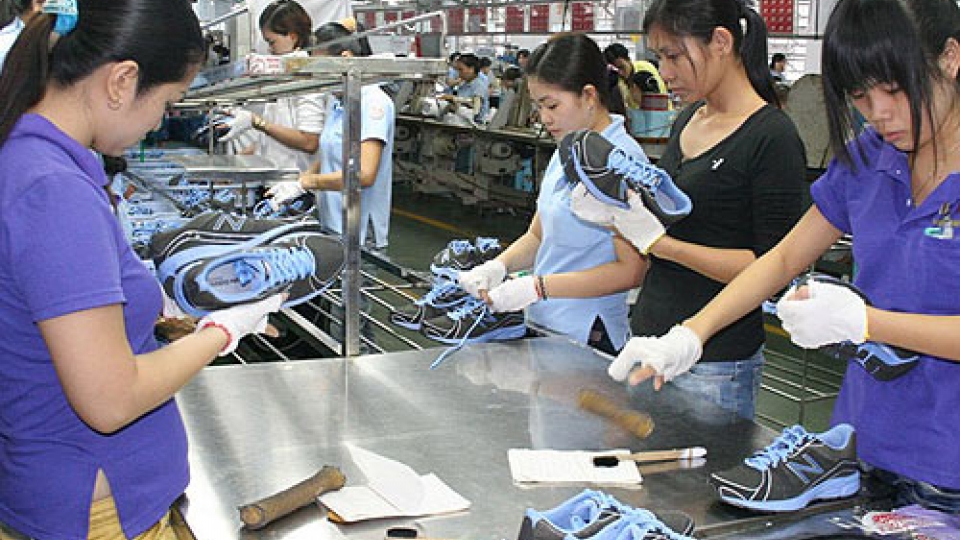A shoe of the Adidas sports line is reflected in a mirror. Photo by Reuters |
A similar move can also be seen at Adidas’ rival Nike, which had 46% of its footwear made in Vietnam last year, against just 27% in China.
While China remains the top supplier in the fashion industry, Vietnam is now seen by major brands as a solid and critically important supplier in second place, according to survey results released by the United States Fashion Industry Association.
“We are reporting a change in the sourcing trend, from ‘China Plus Many’ to ‘China Plus Vietnam Plus Many,’” the association said.
The typical sourcing portfolio today is 30%-50% from China, 11%‑30% from Vietnam, and the rest from other countries, it added.
According to experts in the industry, China manufacturing has become more focused on high value, and with workers’ wages rising, low-cost manufacturing is no longer its priority, according to The Diplomat magazine.
This explains why Vietnam, Indonesia and Bangladesh are producing more shoes and apparel for export.
However, while this trend can yield short-term benefits to Vietnam, long-term consequences will be severe, Professor Nguyen Van Nam, former director of the Institute of Trade Research under the Ministry of Industry and Trade, told the DatViet (Vietnam’s Land) newspaper.
Since advanced technology is not widely applied in Vietnam, the manufacturing sector exploits labor and pollutes the environment, he said.
“Vietnam needs to push for the newest technologies in manufacturing, otherwise we will be a ‘landfill’ of other countries,” he added.
Nguyen Duc Thuan, president of the Vietnam Leather Footwear and Handbag Association (LEFASO), highlighted another challenging aspect of the shift at a conference earlier this year.
As workers in other countries are assisted by machines in the production process, each of them can make 1.2 pair of shoes in an hour, while their Vietnam peers can only manage 0.7, he said.
“Labor productivity obviously increases when technology and high management skills are used, and this is a challenge that Vietnam needs to meet,” Thuan said.
Vietnam’s footwear export value has been growing in recent years, from US$8.4 billion in 2014 to US$14.65 billion in 2017, a 42% increase.
The country contributed a billion pairs of shoes to the 27 billion pairs produced globally last year.
